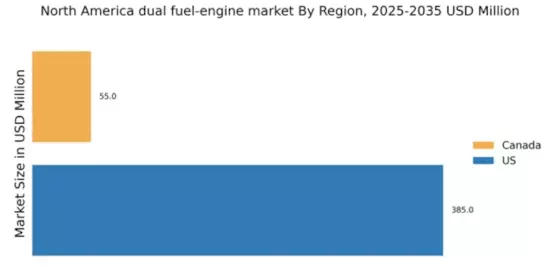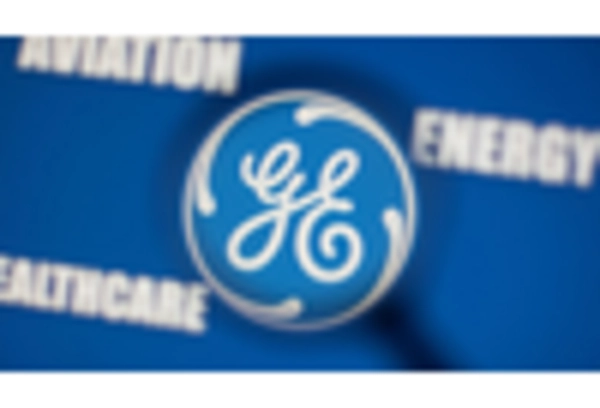Rising Fuel Prices
The dual fuel-engine market in North America is experiencing a notable surge due to the rising prices of traditional fuels. As gasoline and diesel prices fluctuate, consumers and businesses are increasingly seeking alternatives that offer cost savings. Dual fuel engines, which can operate on both natural gas and diesel, provide a viable solution to mitigate fuel costs. In 2025, the average price of diesel in the U.S. is projected to be around $4.00 per gallon, prompting fleet operators to consider dual fuel options. This shift not only helps in reducing operational expenses but also aligns with the growing trend of energy efficiency. Consequently, the dual fuel-engine market is likely to expand as more stakeholders recognize the financial benefits associated with this technology.
Environmental Regulations
The dual fuel-engine market in North America is significantly influenced by stringent environmental regulations aimed at reducing emissions. Regulatory bodies are increasingly imposing limits on nitrogen oxides (NOx) and particulate matter (PM) emissions from heavy-duty vehicles. In response, manufacturers are developing dual fuel engines that comply with these regulations while maintaining performance. For instance, the U.S. Environmental Protection Agency (EPA) has set ambitious targets for reducing greenhouse gas emissions, which has led to a projected growth of 15% in the dual fuel-engine market by 2027. This regulatory landscape encourages innovation and investment in cleaner technologies, positioning dual fuel engines as a favorable option for companies looking to meet compliance standards while enhancing their sustainability profiles.
Technological Innovations
Technological advancements play a crucial role in shaping the dual fuel-engine market in North America. Innovations in engine design, fuel injection systems, and control technologies have enhanced the efficiency and performance of dual fuel engines. For example, the integration of advanced electronic control units (ECUs) allows for better fuel management and optimization, resulting in improved fuel economy. As of 2025, the market is witnessing a shift towards more sophisticated dual fuel systems that can seamlessly switch between fuels based on availability and cost. This technological evolution not only boosts the appeal of dual fuel engines but also supports the broader transition towards cleaner energy solutions, thereby driving market growth.
Growing Infrastructure for Natural Gas
The expansion of natural gas infrastructure is a pivotal driver for the dual fuel-engine market in North America. With the increasing availability of natural gas refueling stations, fleet operators are more inclined to adopt dual fuel technologies. As of November 2025, there are over 1,500 natural gas refueling stations across the U.S., facilitating easier access for commercial vehicles. This growing infrastructure not only supports the operational feasibility of dual fuel engines but also encourages investment in cleaner fuel alternatives. The dual fuel-engine market is likely to benefit from this trend, as more companies recognize the advantages of utilizing natural gas alongside traditional fuels, leading to enhanced market penetration.
Economic Incentives for Clean Technologies
Economic incentives provided by federal and state governments are significantly impacting the dual fuel-engine market in North America. Various programs and tax credits are designed to encourage the adoption of cleaner technologies, including dual fuel engines. For instance, the U.S. government offers tax credits for businesses that invest in alternative fuel vehicles, which can offset initial costs. As of 2025, these incentives are projected to increase the market share of dual fuel engines by approximately 10%. This financial support not only makes dual fuel technologies more accessible but also aligns with broader sustainability goals, fostering a favorable environment for market growth.


















Leave a Comment